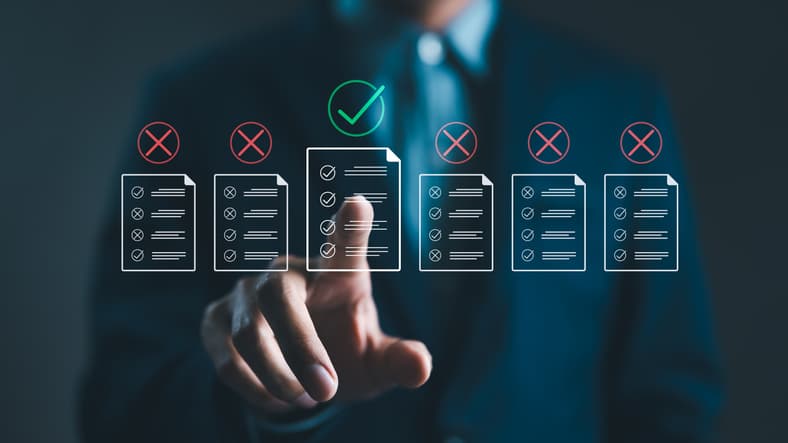

By Paul Walker, EMEA Technical Director, iManage
The assumption that everybody needed to physically be present in the same office in order to be productive went largely unquestioned by businesses and enterprises for decades. After all, “absenteeism” was the real scourge of productivity, wasn’t it? Surely, everyone could agree that having everyone physically present was a good thing – maybe even a prerequisite for high performing teams and well-oiled workflows?
In the last year and a half, these time-honored assumptions have been thrown out the window, as an unplanned worldwide experiment in remote working showed that when left to their own devices, people could still be productive in the overwhelming majority of cases.
However, as the pandemic that kicked off this unplanned experiment starts to recede, enterprises face a new challenge in the form of the hybrid work environment that remains in its wake.
Now that a mix of remote and in office working is no longer a temporary or ad hoc arrangement – but rather a permanent reshuffling of what “the workplace” looks like – how can enterprises operate efficiently and productively when some employees are in the office and the others are not?
The right technology, with AI lending a supporting hand, provides an answer.
When “The Office” is Everywhere, Accessibility and Mobility are a Must
One of the key enabling technologies for enterprises in this new hybrid world is the cloud. Having cloud enabled systems – whether document management systems, billing systems, or various project management or productivity systems – is essential in this hybrid environment where someone is just as likely to be in the office as planted at home or in some other location altogether.
Pity the organisation that only provides access to these business-critical systems by having people trudge into the office and log in from a work desktop; that’s simply not a viable strategy in a hybrid work environment.
A close corollary of the above centers around the need for mobility and accessibility. In order to get knowledge work done efficiently, employees need the ability to access critical documents and emails at any time, on any device, from any location.
Mobility and accessibility are particularly important given the number of professionals who decided that they didn’t need to be tethered to the city center and could, in fact, move to the suburbs or countryside and carry out their professional duties from home three or four days a week.
Staying productive on the longer-than-usual train ride into the city center on the days they do come into the office, then, is a matter of ensuring employees can actually put their smartphones, tablets, and laptops to good use during the commute, with easy access to all the files they need, as well as an ability to seamlessly switch between online and offline modes as connectivity comes and goes. This ensures that work can get done in any permutation of the hybrid model: at home, in the office, or on-the-go between the two.
AI Can Make Sense of the Signals to Unlock Knowledge
Meanwhile, AI is ready to lend a hand to this hybrid environment by making sense of the “signals” given off by employees’ interactions with the business systems they use every day (regardless of where they physically use them), helping to identify experts, expertise, best practices, and knowledge assets.
For instance, a lawyer within a firm might constantly be accessing the document management system to work on matters that center around real estate transactions based in Dubai. That activity would signal their expertise in that niche area.
Likewise, a financial analyst at an investment bank might enter most of their time in the billing system towards M&A deals. AI would pick up on this signal and identify them as an expert in mergers and acquisitions.
Over at a consulting firm, a certain best practices document on how to kick-off a consulting engagement for a Fortune 500 client might be downloaded scores of times by multiple members of the organisation. That too is a signal as to what knowledge assets are providing the most value – and AI is able to curate this selection of best practice documents and knowledge assets in real time, to provide the most up-to-date and useful guidance as to where knowledge lies within the enterprise.
This surfacing of knowledge is particularly valuable in a hybrid environment, helping to bridge the knowledge gap that might otherwise widen into a yawning chasm when there are fewer spontaneous in-person hallway chats or opportunities to quickly pop your head into someone’s office to ask a question.
Strong Security Must Underpin the Effort
It goes without saying that security – always a top concern, even before the emergence of the hybrid workplace – takes on even greater importance in this new landscape. The enterprise needs to go beyond securing the systems within a handful of physical offices to securing the systems within hundreds or even thousands of different “offices” – i.e. people’s homes – to ensure that confidential information and sensitive data isn’t compromised.
Fortunately, AI is able to lend a hand here as well. Real-time threat detection and monitoring of endpoint devices can be “fine-tuned” by AI, to detect when any individual user’s behavior is out-of-the-ordinary with regards to how they normally interact with a business critical system. Is an employee logging into and viewing folders they normally don’t? Are they accessing the system from a time zone or location that is atypical for them? Again, these are signals that AI can pick up on and ensure that nothing troublesome is going on across the extended enterprise.
As long as the hybrid work environment is here to stay – and at present moment, that certainly appears to be the case – enterprises need to make sure they have the proper technologies in place to support their workforce, including not just accessible cloud-based systems, but AI that enhances everything from knowledge sharing to security.
By doing so, enterprises can ensure that productivity – far from being hampered by a hybrid environment – is here to stay as well.


